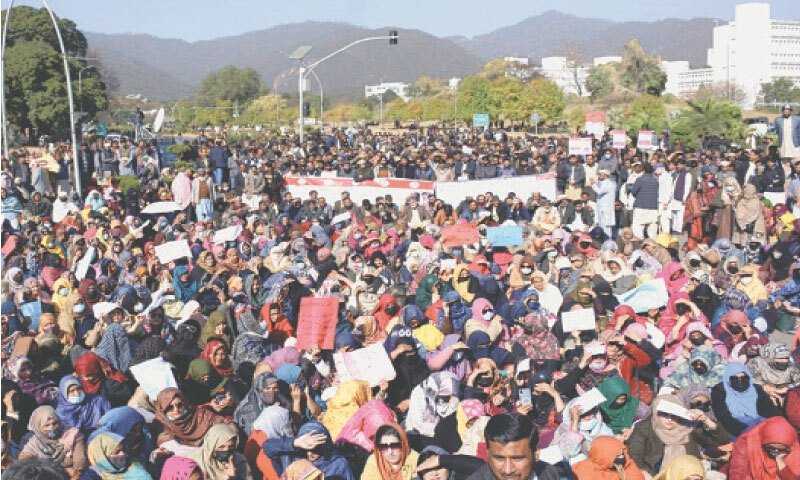Government employees staged a large-scale protest in the federal capital on Tuesday, voicing strong opposition to the newly introduced pension reforms. The demonstration led to widespread disruption, with protesters blocking roads and clashing with police near Secretariat Chowk. The unrest resulted in significant traffic congestion in surrounding areas, affecting commuters and government operations.
Clashes Between Protesters and Police
To contain the protest, a sizable police force, including senior officers such as the Deputy Inspector General (DIG) and Superintendent of Police (SP), was deployed. Despite heavy security measures, tensions escalated when demonstrators locked both gates of the government secretariat, preventing entry and exit. Police attempted to disperse the crowd using baton charges and tear gas, but employees continued their agitation, chanting slogans and demanding immediate action from authorities. Several protesters were detained, while some sustained injuries during the scuffles.
Protesters’ Demands
The demonstrators are calling for the complete withdrawal of the pension reforms, which came into effect on January 1, 2025. In addition to revoking the changes, they are also demanding an end to what they claim are discriminatory policies targeting retired employees. Another key demand is a 10% increase in the disability allowance, which they argue is essential to support disabled government workers and pensioners. Union leaders have warned that if their grievances are not addressed, they will intensify their protests, potentially leading to a nationwide strike.
Key Pension Reforms and Government’s Justification
The pension reforms introduced by the government are aimed at reducing financial liabilities in the face of mounting national debt. The primary changes include:
- Ban on Dual Pensions: Retirees will no longer be able to receive multiple pensions.
- End of Multiple Pensions for Individuals: Those who previously qualified for more than one pension under different government schemes will now receive only one.
- Revised Pension Calculation: Future pension increments will be based on the average salary earned in the last two years of service, rather than the final salary drawn before retirement.
Officials argue that these reforms will help save billions annually and bring the pension system in line with international fiscal policies. They maintain that the current pension structure places an unsustainable burden on government resources and needs urgent restructuring.
Employee Concerns and Future Actions
Government employees strongly oppose these measures, contending that the changes will significantly reduce their post-retirement financial security. Many retirees rely on dual pensions to meet their expenses, and the new policies, they argue, will leave them struggling. Furthermore, the revised pension calculation method is expected to lower overall payouts, making it harder for pensioners to cope with inflation and rising living costs.
With negotiations between government representatives and employee unions reaching an impasse, the protests are likely to escalate. Union leaders have threatened further demonstrations, sit-ins, and strikes if their demands are not met. The situation remains tense, with both sides unwilling to compromise.





